Lab hoods
Selecting the right lab hood—also known as a laboratory hood or safety cabinet—is essential to ensure the safety of users, the protection of the environment, and the integrity of your experiments. With several hood types available, the best choice depends on two key factors:
1. What Needs Protection?
-
User and Environmental Protection: Prevent exposure to hazardous substances such as toxic fumes, powders, or infectious agents.
-
Product or Sample Protection: Maintain a sterile workspace by preventing airborne contamination.
-
Dual Protection: Some applications require both personnel and sample protection—for example, when working with biohazards or cytotoxic drugs.
2. What Type of Threat Is Present?
Different laboratory hoods are designed to protect against specific risks, including:
-
Biological hazards (e.g., bacteria, viruses, and other airborne microorganisms)
-
GMO containment
-
Chemical vapors and fumes
-
Fine powders and dust particles
-
Cytotoxic substances used in pharmaceutical applications
How Lab Hoods Work
A lab hood is a ventilated enclosure equipped with airflow systems and filtration technologies designed to control exposure and contamination. Depending on the type, hoods may use:
-
HEPA filters for particulate filtration
-
Activated carbon filters for chemical absorption
-
Pre-filters to extend filter life
-
Ducted or recirculating airflow
-
UV-C decontamination for added sterilization
Each type of laboratory hood—biosafety cabinet, fume hood, or laminar flow cabinet—serves a specific role in safeguarding your laboratory environment. Explore our detailed guides to learn which hood best suits your application.
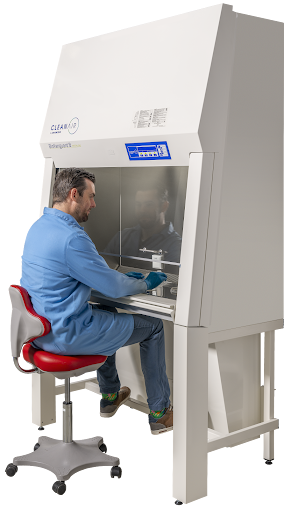
Laminar Flow Cabinets (LAFs)

Laminar flow cabinets are precision-engineered laboratory hoods that protect sensitive samples and equipment from airborne contaminants. By directing a continuous stream of HEPA-filtered air across the work surface, these lab hoods create an ultra-clean environment ideal for applications such as microbiology, electronics assembly, and sterile compounding. Unlike biological safety cabinets, laminar flow hoods are designed to protect the product — not the user — making them a reliable choice when product purity is the top priority.
PCR Cabinets
PCR cabinets are specialized laboratory hoods designed to prevent cross-contamination during Polymerase Chain Reaction (PCR) workflows. These lab hoods create an ultra-clean, particle-free environment using vertical laminar airflow and high-efficiency HEPA filtration. Many PCR hoods also include UV-C decontamination to eliminate DNA and RNA residues between processes. Ideal for molecular biology, genetics, and clinical diagnostics labs, PCR cabinets ensure reliable amplification results by safeguarding sensitive samples from airborne contaminants and residual nucleic acids.

Biological safety cabinets (BSCs)
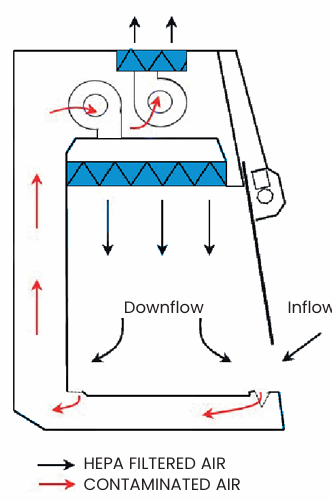
Biological safety cabinets are specialized laboratory hoods designed to protect users, the environment, and samples when working with biological materials. These lab hoods use HEPA filtration and directional airflow to contain airborne contaminants, making them essential for microbiological research, handling biohazards, and working with infectious agents. Whether you’re managing GMOs, pathogens, or other biohazardous materials, a BSC provides the protection needed for safe and compliant laboratory work.
Cytotoxic cabinets
Cytotoxic safety cabinets are specialized laboratory hoods designed for the safe handling of cytotoxic drugs and other hazardous pharmaceutical compounds. These lab hoods provide both product and personnel protection through controlled airflow, HEPA filtration, and, in many cases, negative pressure containment. They work very simular to class II biological safety cabinets, but an additional HEPA filter layer is added underneath the worktray to allow safe filter removal. Widely used in hospital pharmacies, oncology labs, and cleanroom environments, cytotoxic cabinets ensure compliance with safety guidelines for the preparation of chemotherapy drugs and other high-risk materials. They are essential for minimizing exposure to toxic aerosols and ensuring a contamination-free work area.
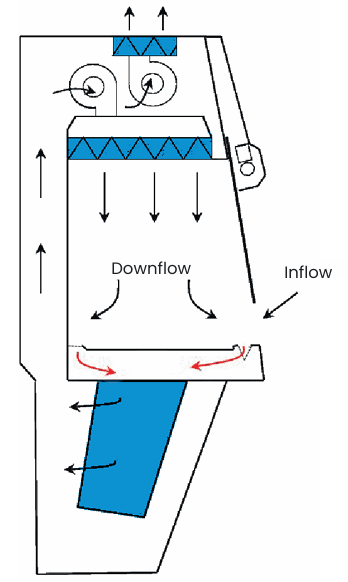
Ducted Fume hoods
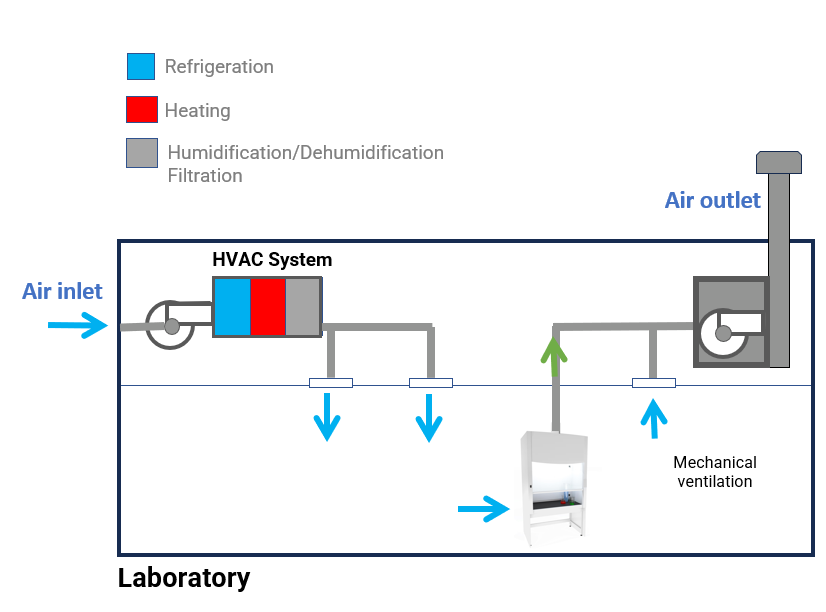
Ducted fume hoods are high-performance laboratory hoods engineered to protect users from hazardous chemical fumes, vapors, and gases. These lab hoods work by drawing contaminated air through the hood and expelling it outside the building via a dedicated ducting system. Ideal for laboratories working with volatile solvents, acids, and other reactive chemicals, ducted fume hoods provide a reliable and robust form of source ventilation. They are the gold standard for chemical safety in environments where heavy chemical release limits the use of ductless fume hood technology.
Ductless Fume Hoods
Ductless fume hoods are versatile laboratory hoods designed to protect users from harmful chemical vapors and fumes without the need for external ducting. These self-contained lab hoods use advanced filtration systems — typically activated carbon filters — to capture and neutralize hazardous substances directly at the source. Ideal for labs that require mobility, flexibility, or have space limitations, ductless fume hoods offer a cost-effective and eco-friendly alternative to traditional ducted systems while ensuring safe air quality for lab personnel.
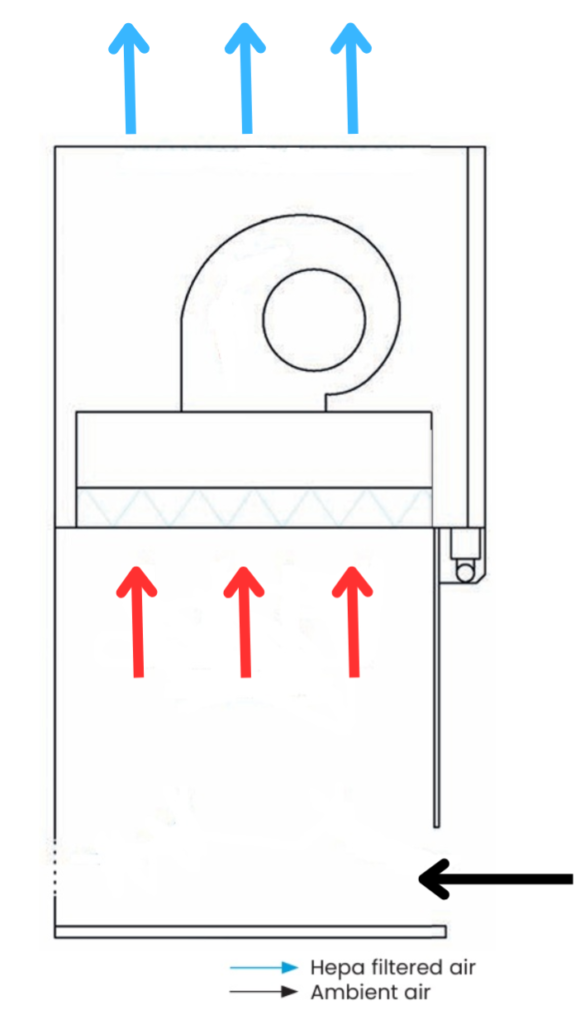
Powder hoods

Powder hoods are specialized laboratory hoods designed to safely handle fine particulates and hazardous powders during weighing, dispensing, or sample preparation. These lab hoods protect the user and surrounding environment by drawing airborne particles away from the operator and through high-efficiency filtration systems, such as HEPA filters. Commonly used in pharmaceutical labs, compounding pharmacies, and chemical research, powder containment hoods ensure clean, accurate handling of substances like APIs, cytotoxic compounds, or laboratory-grade powders.
Frequently asked questions
What is the difference between a fume hood and a biological safety cabinet?
A fume hood is designed to protect the user from chemical vapors by ventilating them out of the lab, while a biological safety cabinet (BSC) protects the user, the environment, and the product from biological hazards using HEPA filtration and controlled airflow.
When should I use a ductless fume hood instead of a ducted one?
A ductless fume hood is ideal for light to moderate chemical use in spaces without external ventilation. It uses carbon filters to purify air before recirculating it. In contrast, ducted fume hoods are better for heavy-duty chemical applications requiring direct exhaust outside the building.
The online evaliquest risk assessment can be used to evaluate if it is safe to use ductless fume hood techology.
Which lab hood offers both product and user protection?
A Class II biological safety cabinet offers dual protection for the user and the sample. It’s commonly used in microbiology, pharmaceutical prep, and clinical laboratories handling infectious materials or sensitive cultures.
